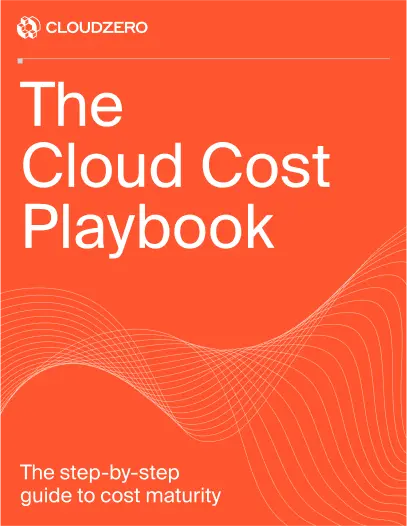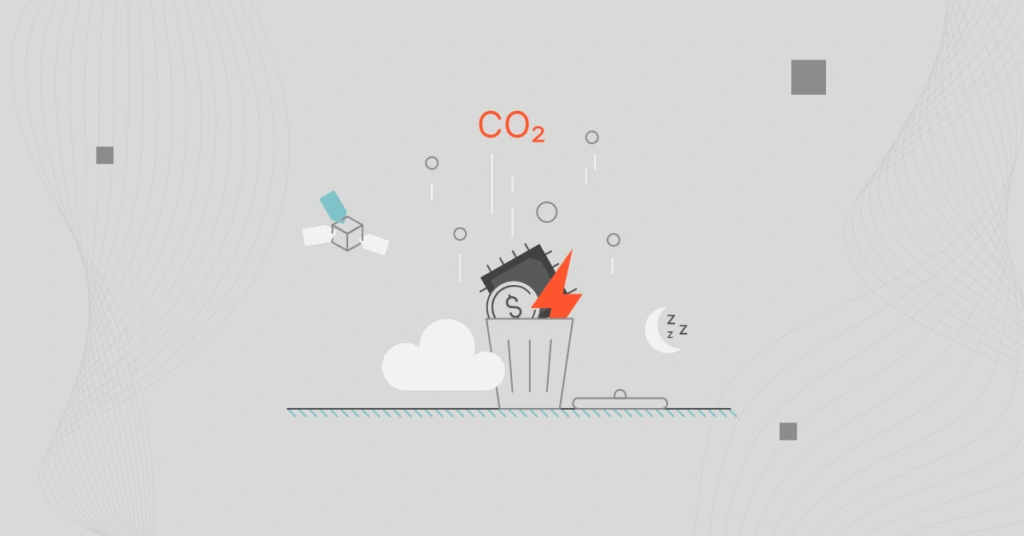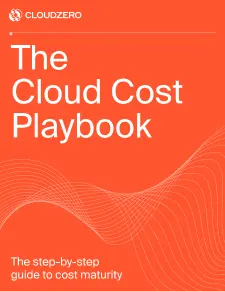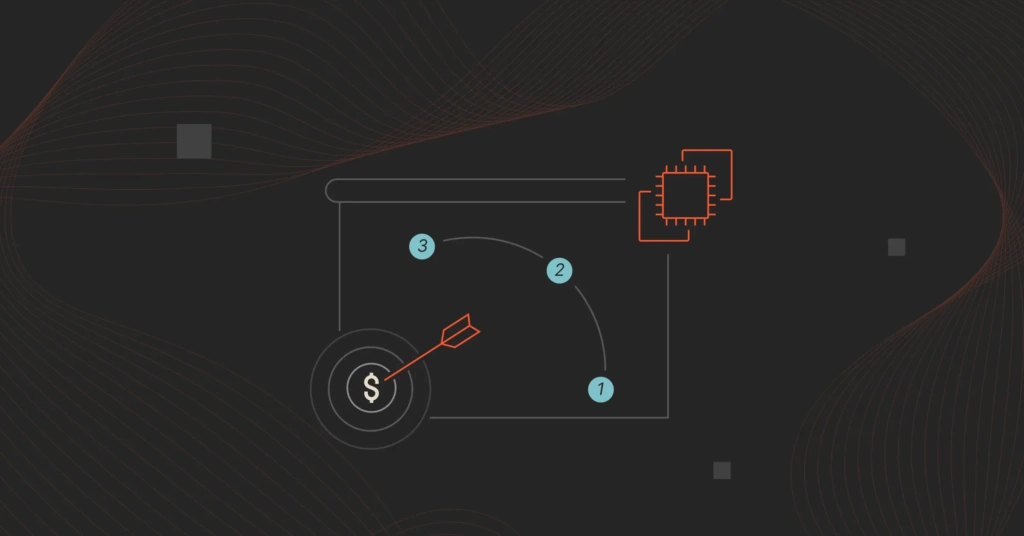If you want to align green awareness with bottom-line impact, start by looking at your cloud waste. Not just as a budget problem, but also as wasted energy, because that’s exactly what it is.
AI, especially, is a mounting factor. Deloitte’s Tech Trends 2025 report highlights the growing energy demands of large AI models, warning that electricity use in data centers could soon rival that of entire nations like Sweden or Germany. The rapid adoption of AI also means overall data center electricity consumption is projected to triple in the next decade.
These trends are already visible in today’s cloud operations. Every overprovisioned instance, idle VM, or forgotten service in your cloud estate is part of that rising demand. It’s burning power, generating emissions, and inflating your bill. Which means the case for efficient, cost‑aware cloud operations has never been stronger.
So here’s your opening for sustainable cloud operations: focus on cloud cost optimization. Build real FinOps. And in the spirit of “Field of Dreams”: if you build it, sustainability will come.
Related: AI And Sustainability: Measuring The Impact Of The Generative AI Boom
Let’s be honest. Most companies aren’t greening their cloud to save the planet. Some are. But most are innovating, scaling, and operating in ways that benefit their bottom line and their shareholders. That’s not cynical. It’s reality.
So what do you do if you do care about sustainability and want to make progress inside that reality? You start with the economics, because that’s what gets action and budget.
- Track and eliminate cloud waste. Identify idle resources, overprovisioned instances, and unused storage that drain both your budget and your energy footprint. Every dollar of waste you remove also cuts unnecessary carbon emissions.
- Align cost data with engineering decisions. Make cost and usage metrics visible to the teams deploying and scaling workloads. When engineers see the real-time financial impact of their choices, they naturally make efficiency gains that also lower emissions.
- Use existing FinOps practices to surface where usage, spend, and emissions overlap. Extend tagging, chargeback, and dashboard tools to include carbon data alongside financial data. This lets teams target optimizations that pay off twice, in reduced costs and reduced environmental impact.
When you do this well, the waste you uncover can be staggering.
The Cost Of Cloud Waste
Studies show estimates start from 32% of cloud spend wasted due to idle or overprovisioned resources.
The good news: That gap isn’t just academic, it’s actionable. And once you’ve cleared the 32% low-hanging fruit, there’s still more energy (and money) being burned, meaning there are opportunities for real optimization. That’s why leaning into FinOps has the double benefit of both stronger cost control and a cleaner cloud footprint.
Yet, when ESG teams push sustainability without IT or FinOps alignment, the results are predictable: glossy reports and little action to show for it. This is why the reverse approach often stalls.
Sustainability alone rarely moves the needle. But profit and loss? That’s what gets attention at the top level. That’s why the most effective efforts start not with emissions targets, but with spend control.
So, again: if you want to put sustainability on the list, you’re faced with the hard reality that cutting emissions isn’t always the goal. Still, it’s a positive side effect of doing cloud right.
FinOps + Emissions Insight = Sustainable Cloud Ops
Some refer to this as GreenOps. This refers to the practice of managing cloud usage to reduce both financial waste and carbon emissions. It builds on existing core FinOps principles like visibility, optimization, and accountability, and adds sustainability as a measurable outcome.
Ultimately, FinOps treats waste as a cost driver. Carbon emissions are simply another form of waste with added business and compliance risk.
In other words, FinOps is the foundation. It provides the data, tagging, chargeback models, and visibility mechanisms. GreenOps simply extends that foundation to account for environmental outcomes.
The FinOps Foundation has covered sustainable cloud management in its library, describing it as allowing “engineers and product personas to balance environmental considerations alongside financial costs or benefits of the cloud when architecting, optimizing, and deploying workloads in the cloud.”
That’s indeed happening. Teams are repurposing tagging schemes to surface high-carbon workloads. Dashboards built for cost visibility are adding emissions data. Reporting cycles are starting to include sustainability KPIs.
It won’t overhaul your operations overnight, but it’s a convenient and immediate way to add sustainability wins to your existing FinOps work.
It’s also an initiative that runs on the same engine as traditional FinOps with no extra program required.
Three Bottom-Line Moves That Just Happen To Be Green
Here are three proven tactics that improve cloud unit economics while cutting emissions:
1. Remove idle resources
Unused cloud infrastructure is a double drain on budgets and the environment. Google Cloud’s Active Assist can automatically detect underutilized virtual machines (VMs), idle projects, and unnecessary network resources.
Turning these off can yield quick wins:
- Lower spend: You’re billed for what you use, not what you provision.
- Lower emissions: You reduce power and cooling by cutting down on idle infrastructure.
2. Right-size compute
One of the biggest causes of cloud waste is over-provisioned instances. Tools like AWS Compute Optimizer use historical metrics to suggest optimal instance types.
Effective rightsizing can cut waste significantly, often delivering double-digit savings in both spend and carbon impact.
3. Off-peak and carbon-aware scheduling
Not all workloads need to run in real time. Batch jobs, ML training, and backups can often be scheduled during off-peak hours or in regions with cleaner grids. Microsoft’s Azure Emissions Impact Dashboard helps visualize emissions intensity across regions and times.
Spot pricing adds a financial benefit: running jobs when excess capacity is available reduces costs and aligns with surplus renewable supply.
Motivation That Goes Beyond The Budget
Even if cost is your first priority, the same actions that improve unit economics also deliver sustainability gains. And for organizations that also make green operations part of their mission, that’s an extra win. Give engineers the visibility and data they need, and they’ll cut waste in ways that lower both spend and carbon.
When sustainability metrics appear next to cost metrics, teams make better decisions. Cloud region selection, for example, can factor in carbon intensity alongside latency and pricing. Gartner predicts that by 2027, a data center infrastructure sustainability program will be in place for 75% of organizations.
This isn’t about slowing down engineering. It’s about giving them more context to optimize. And while enterprises can drive big wins, the hyperscalers also play a role.
The shared responsibility of cloud sustainability
Even with cost at the center, cloud sustainability is still a shared responsibility. Hyperscalers are already taking charge:
- Google Cloud has been carbon neutral since 2007
- Amazon and Microsoft have made similar commitments
But those efforts only address the infrastructure layer. In short, sustainability of the cloud.
The bigger opportunity is sustainability in the cloud. That means:
- Rightsizing workloads
- Removing unused storage and compute
- Using efficient code and architectures
If all of those seem familiar to your work in FinOps, that’s because they are. All of these align directly with FinOps principles: use only what you need, tie usage to value, and continuously optimize.
Sustainability isn’t the goal – profit is
Let’s be clear: it’s a noble pursuit. It supports a healthier planet, aligns with ESG goals, and gives purpose to technology work.
For many orgs, however, that doesn’t come at the expense of progress. Strip away ethics, values, and external pressures from sustainable cloud practices, and you realize that what really drives business is financial efficiency. That’s FinOps in a nutshell: reducing cloud waste, improving unit economics, and tying every dollar spent to business value.
And, ironically, that’s exactly why sustainable cloud management succeeds when it follows FinOps. Because the same practices that improve margins also reduce emissions. You’re taking care of two birds with one stone.
When you grow, your cloud grows, and your emissions rise. But they’re all interlinked. Start with optimizing spend. Sustainable cloud ops will follow.








